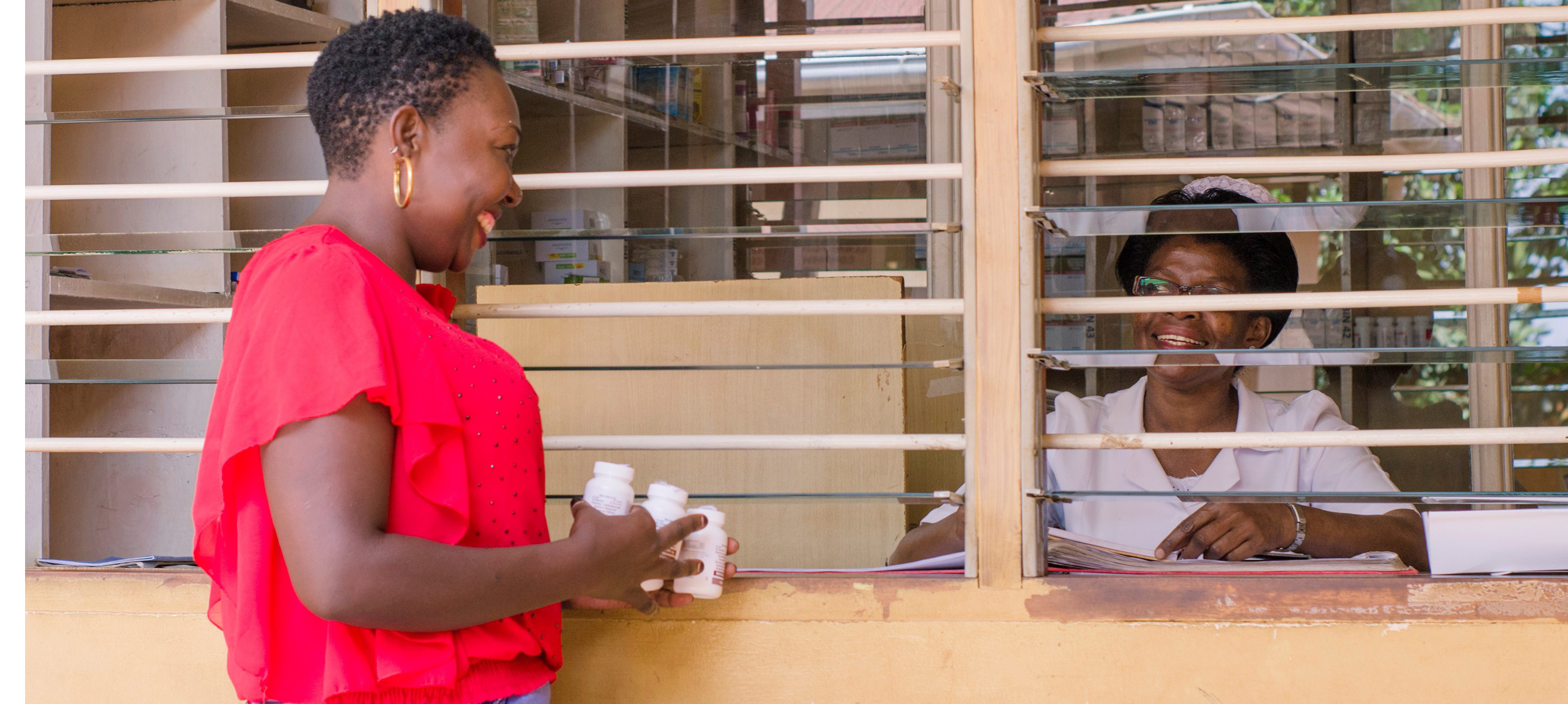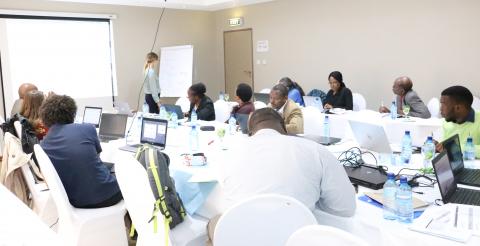With technical support from the U.S. President’s Emergency Plan for AIDS Relief (PEPFAR)-USAID Mission in Botswana and the USAID Global Health Supply Chain Program-Procurement and Supply Management (GHSC-PSM) project, the country began transitioning patients to TLD in early September 2018. The decision by the Ministry of Health and Wellness (MOHW) to shift patients to TLD was driven by the desire to reduce pill burdens (shifting patients from two pills to one daily); to more rapidly suppress patient viral load; for fewer patient side effects; and for greater potency, as TLD reduces the chance of drug resistance more so than existing or “legacy” first-line ARV regimens used.

In September 2018, Botswana became one of the first countries to transition to the combined drug regimen tenofovir, lamivudine and dolutegravir (TLD), a single-pill antiretroviral (ARV). TLD is the preferred first-line ARV for treating HIV because it is highly effective, safe, and proven to rapidly suppress viral load in adult and adolescent patients with HIV.

Once the MOHW was onboard for TLD transition, they began work with GHSC-PSM in Botswana to develop a phased strategy.
- Phase 1 focuses on new treatment initiations and shifting patients to TLD that had been using two pills of tenofovir and emtricitabine (TDF/FTC) and dolutegravir.
- Phase 2 shifts patients who are using legacy drugs nevirapine, lopinavir/ritonavir, and efavirenz in combination with other ARVs to a TLD regimen.
Although Phase 1 of the TLD transition was initially planned to begin in November 2018, the MOHW decided just months before to advance the start date by two months. This decision was made following a forecasting and supply planning (FASP) workshop facilitated by GHSC-PSM in which stakeholders realized the risk of a shortage of certain legacy ARVs, and the need to mitigate the risk of treatment interruption with expedited shipments of TLD. To support this decision, GHSC-PSM expedited delivery of the first TLD shipment to Botswana, shifting from October to August 2018.
The project delivered the first shipment of 196,428 packs of TLD in August 2018. By the beginning of September 2018, the Botswana Central Medical Store (CMS) started distributing TLD to health facilities, and the planned shift to dispensing TLD to patients immediately followed.
By the end of 2018, an additional 551,600 packs were procured and delivered by GHSC-PSM. Currently, GHSC-PSM in Botswana is supporting the MOHW’s preparations for Phase 2 of the TLD transition, which is set to launch in July 2019.
While Botswana has implemented their TLD transition plan quite successfully, it has not been without challenges. The Phase I transition went slower than expected. To monitor the effectiveness of the transition plan, Botswana’s National Antiretroviral Treatment Costing and Forecasting Technical Working Group authorized GHSC-PSM to conduct a TLD uptake assessment. This assessment helped determine causes for the unexpectedly slow transition and provided an estimate of the uptake level in the country so far.
Botswana’s TLD Transition Timeline
July 2018: FASP workshop led by GHSC-PSM yields revised transition plan
August 2018: first TLD shipment delivered to CMS
September 2018: CMS begins TLD distribution to health facilities
September 2018: Phase I transition began
October 2018: 2nd TLD shipment delivered to CMS
December 2018: 3rd TLD shipment delivered
February 2019: 4th shipment delivered
March 2019: TLD uptake assessment conducted by GHSC-PSM
Conducted in March 2019, the assessment found that uptake had increased to 52 percent by the end of February 2019. Health facility clinicians and pharmacists reported that the relatively slow shift was mainly due to the time needed for patient reviews. Clinicians must conduct these reviews prior to changing patient prescriptions and do so every six months for most patients. Other factors included the need to deplete stocks of legacy regimens at health facilities and the lack of adequate information communicated to health facility staff about the timeline and benefits of TLD transition.
After Phase 1 of the transition, the MOHW and stakeholders began discussing their lessons learned and recommendations for next steps in several structured forums. These forums will allow them to better manage the next phase of the transition. Action items so far have included developing and disseminating adequate orientation materials for health workers and allotting enough transition time for clinicians to review and change prescriptions.
Botswana seeks to control the HIV/AIDS epidemic within its borders by adopting the UNAIDS targets for testing and treating HIV and achieving viral load suppression for patients. Successfully shifting patients to a fixed-dose TLD regimen and ensuring continuous availability of ARVs are critical ingredients for achieving treatment and viral load suppression targets. GHSC-PSM will continue to support Botswana’s MOHW and CMS to ensure uninterrupted supply of lifesaving ARVs and the smooth implementation of subsequent phases of the country’s TLD transition.
Reasons Cited for Slow TLD Transition
- 60% - Wait time for clinicians to review and change prescriptions
- 15% - ARV clinicians' misconceptions about use of TLD with TB treatment
- 13% - Patients still using their multi-month prescriptions of legacy ARVs
- 13% - Facility overstocks of legacy ARVs
- 7% - Facilities reporting they did not receive TLD guidance or communications
- 7% - Other reasons (such as patients resisting the change)
- 2% - No TLD stocks at facility